
The Tokina Cinema Vista lenses are a series of very fast (T1.5) primes that cover a 46.7mm image circle that allows them to be used on full frame sensors, and even on the slightly wider-than-full frame RED WEAPON 8K’s 40.96 x 21.60mm sensor. Tokina’s latest addition to the range is the 105mm, which now joins the 18, 25, 35, 50 and 85mm lenses to complete the 6 lens set.
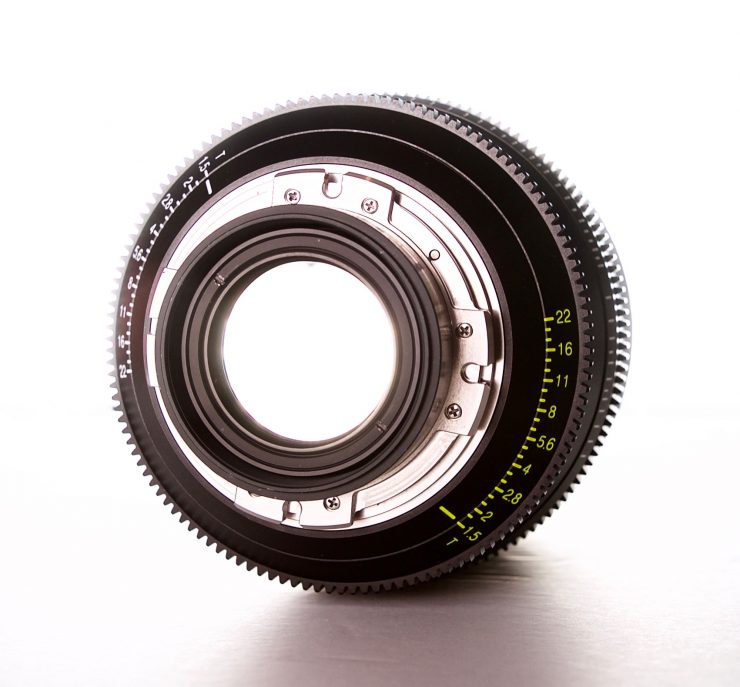
Key features
- T1.5
- Covers an image circle of 46.7mm
- 300-degree focus rotation
- No focus breathing
- One of 6 lenses in the series
The biggest selling points for the Tokina Cinema Vista series are that they are all T1.5, have virtually no breathing (apart from the 18mm), feature a 300-degree focus rotation, and cover an image circle of up to 46.7mm. While some of the newer cinema primes from companies are rehoused from stills glass, Tokina has purpose-built these just for cinema, with all new elements inside. They are also color matched for consistency across the range.
I have previously reviewed the 35, 50 and 85mm T1.5 lenses. From my experience using the Tokinas I found that they provide beautiful imagery, are tack sharp even wide open, and have almost no focus breathing. I personally think that the lenses are very underrated compared to a lot of the competition. The only real downside to them is their weight, and this alone could be enough to put some potential buyers off.
Last year I also reviewed the 18mm T1.5, which is an incredible feat of engineering. Not only is it wide and fast, but the large image coverage means that the lens has no problems being used on the RED DSMC2 Monstro 8K VV, ARRI ALEXA LF, or Sony Venice. The image circle of light is almost 59mm in diameter and will cover the ARRI Alexa65 in 5K mode. Having such a massive image coverage gives you peace of mind that you are buying something that is fairly future proof (if there is such a thing).
Tokina 105mm T1.5 Cinema Vista
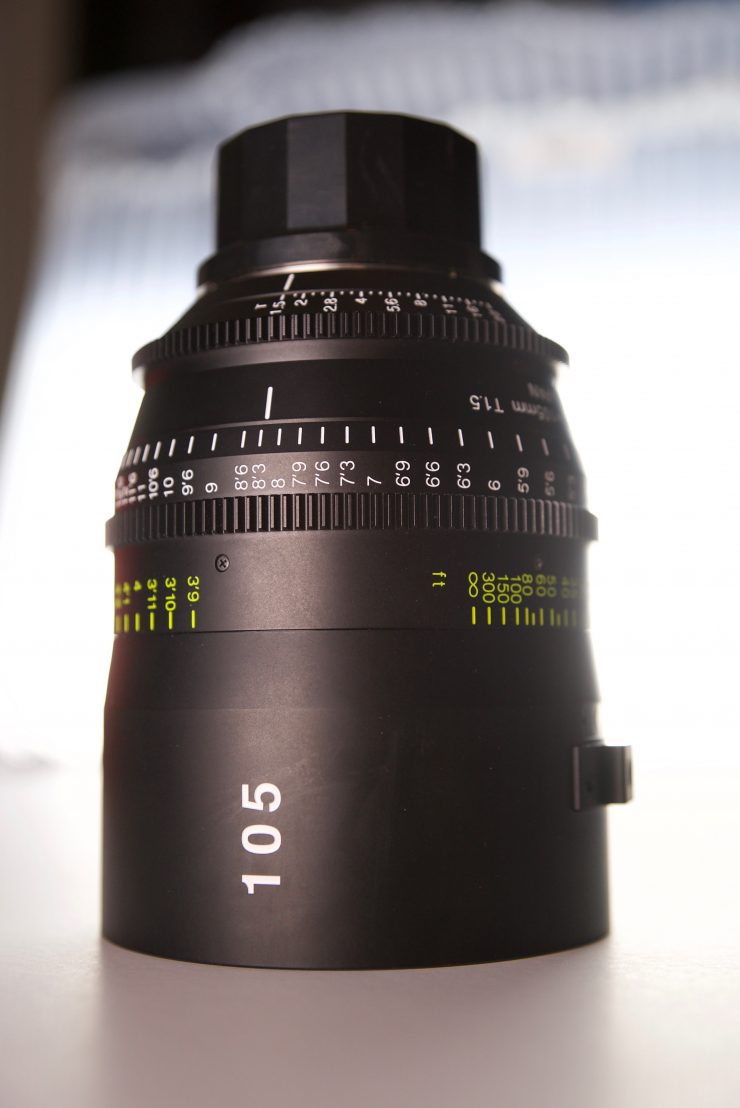
The Tokina 105mm T1.5 was the fastest full frame 105mm lens in the world, that’s a title it now shares with Sigma. The lens will even cover some of the shooting modes on the Alexa 65. When I asked Tokina why they made the lens 105mm and not 135mm I was told that it was too hard to make a 135mm with a T1.5 aperture. 105mm is certainly an unusual length, with most lenses around this focal length tending to be either 100 or 135mm.
This 105mm focal length lens shares the same form factor, lens gear position, focus rotation (300°), and front barrel diameter (114mm) as the other Tokina Cinema Vista prime lenses. The 105mm also has threading on the front of the lens to accommodate 112mm screw on filters.
The minimum focus distance is 1.15m (3’9″).
Optical Design
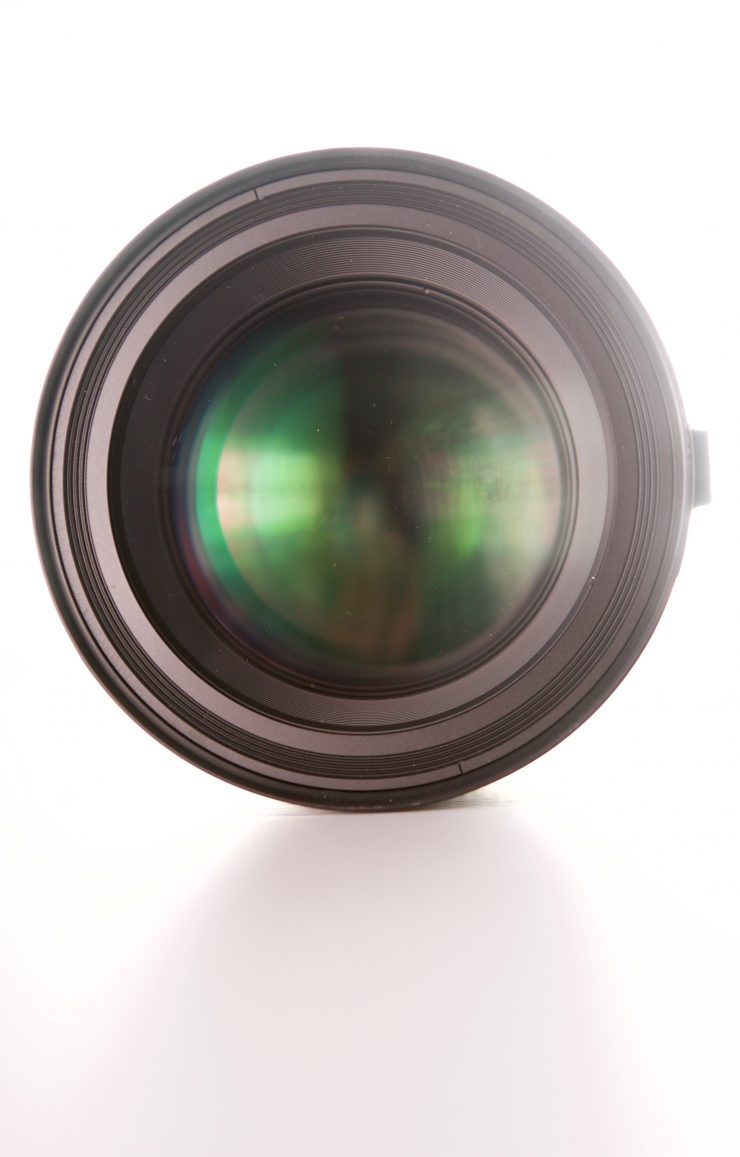
The lens features two aspherical elements and it has 9 aperture blades. The optical design also uses 16 Elements in 13 Groups. Making a lens that is 105mm, with a T1.5 aperture, and minimal focus breathing, that covers an image circle of φ46.7mm is quite an engineering feat.
It’s a big lens!
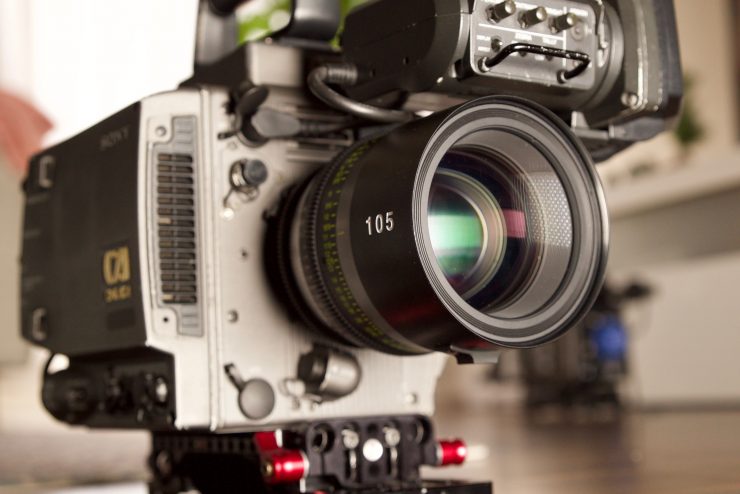
Size-wise it is larger than some of other Vista series lenses. It weighs in at a 5.6 lb / 2.6 kg (PL mount version). Despite this weight, it’s actually slightly lighter than the 18mm T1.5 (5.9 lb / 2.7 kg). To put that weight into perspective, the Canon CN7x17 KAS S Cine-Servo 17-120mm T2.95 weighs 6.4 lb / 2.9 kg.
The 105mm T1.5 is also 161 mm /6.34″ long which makes it fairly big as far as prime lenses are concerned. As a comparison, the ARRI 125mm Signature Prime T1.8 – LPL Mount is 178mm/ 7″ long.
Built like a tank
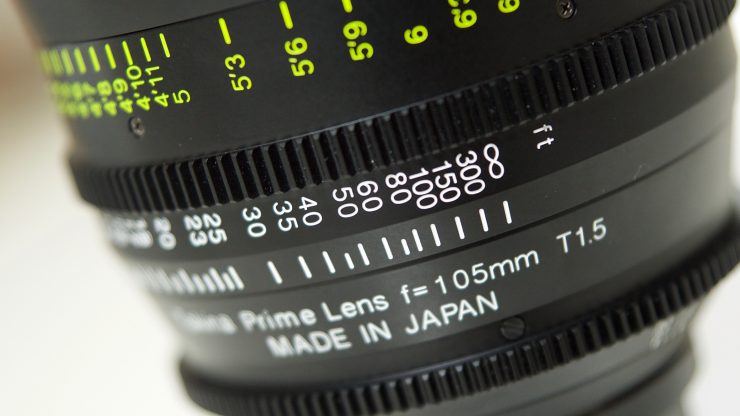
At 2.6kg, the 105mm T1.5 is a heavy piece of glass and in that regard, it feels very solidly made. The outside of the lens casing is hard metal and while it has been designed in a matte black finish to avoid light reflecting off it, it is susceptible to marks and scratches.
The iris and focus rings are well weighted and their operation is smooth. The focus rotation is 300 degrees, which is great if you are using a follow focus, but if you are pulling focus by hand you will find it difficult going from the minimum focus to the maximum focus point.
There is a built-in lens support adapter that takes a 1/4-20″ thread. Being as heavy as the lens is, it’s probably a good idea to use a lens support, especially when using a version of the lens that isn’t a PL mount.
Markings
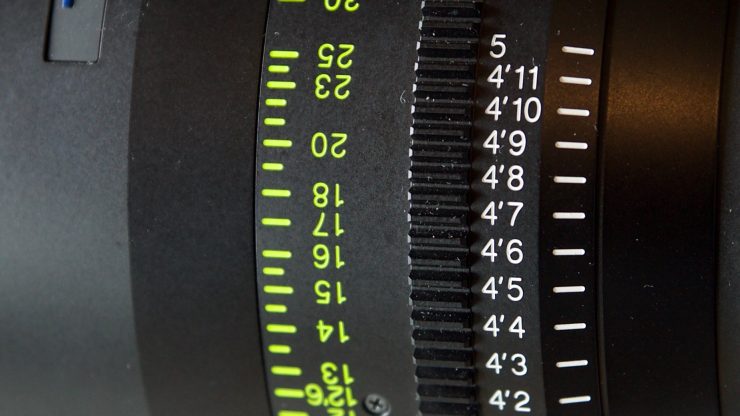
The 105mm T1.5 Vista Cinema has clearly marked focus and iris scales on both sides of the lenses. There certainly are a lot of markings and some cinematographers or camera assistants may think there are too many. What I did discover from going into rental houses here in Japan and talking to camera assistants and cinematographers who work here is that they actually like having lots of marking on lenses. As the lenses are made in Japan this is probably why there are so many markings.
The markings are easy to read and can be seen on both sides of the lens. On the operator’s side, they are white in color and on the cameras assistants side they are a fluoro yellow.
Mounts available
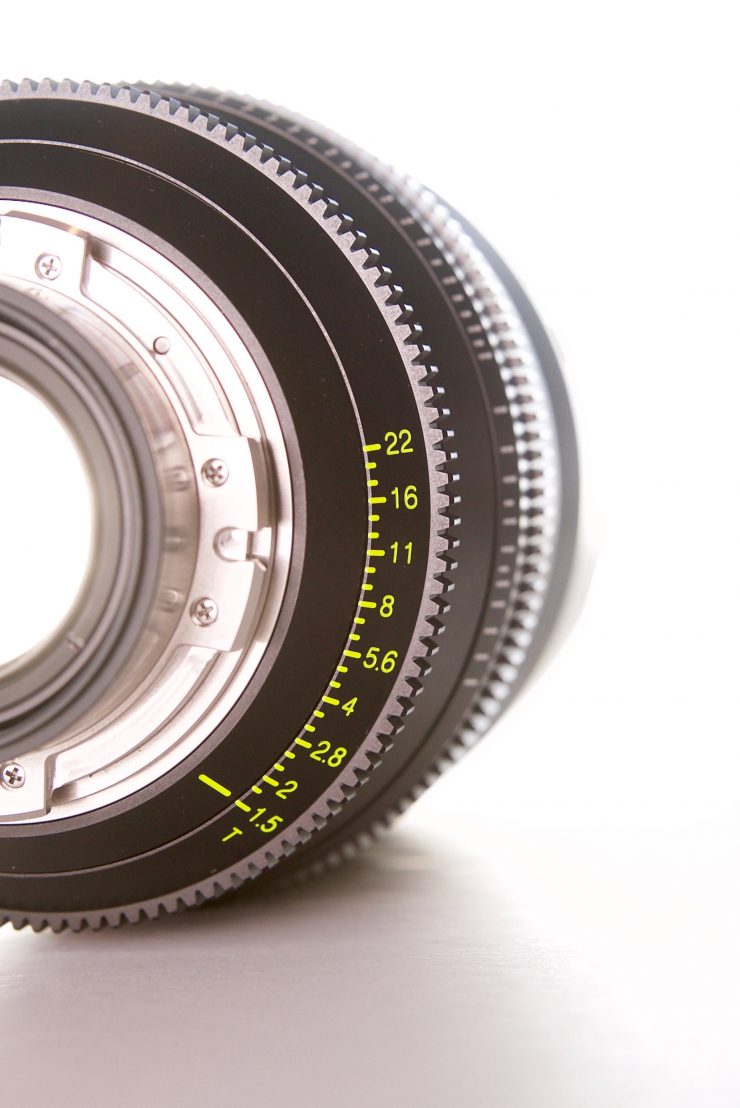
The lens is available in PL, Canon EF, M4/3, Sony E Mount, as well as ARRI LPL. The mount is changeable, but unfortunately, this is not something you can do yourself.
No Breathing?
I tested out the lens by doing large focus throws and to my eye, there is virtually no breathing. What you do see is some perspective shift which is normal when refocusing a lens.
Image shift is the change in location of a fixed point after a focus rack. It should be in the same spot after you rack focus.
Perspective shift is the focal length of the lens being modified by the movement of the optics. A slight change in focal length may happen if there is a floating element that moves and is not properly corrected for in the design. Certainly the great majority of lenses have this issue. It’s also tenths of a mm so not overly noticeable.
Focus breathing is a change in image size so the size of object will get larger as it moves out of frame. That is reproduction size.
In summary,
Fall off and Vignetting
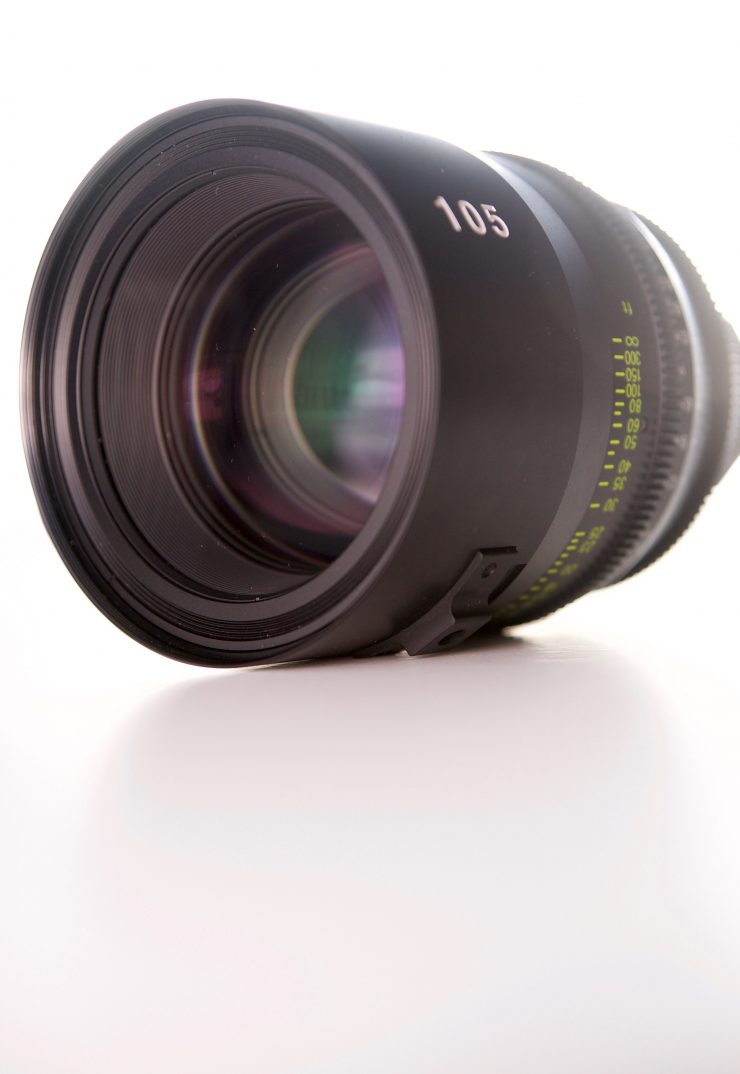
The lens has a really nice fall off and it throws a 54mm light circle so you get a nice amount of illumination across your image without much vignetting of the image.
Sharpness
This is where the Tokina Vista lenses excel. All of the focal lengths that I have tested have been extremely sharp, even when used wide open at T1.5. The 105mm is no exception, and it is nice and sharp even at T1.5 on a full frame sensor. It is certainly softer out towards the edges of the frame, but not in a way that is distracting or optically bad. Considering the image coverage and fast aperture of this lens, I’m amazed at how sharp it is. Tokina has done an outstanding job given the technical requirements this lens had to fulfill.


T1.5 
T2 
T2.8 
T4 
T5.6 
T8
As you can see in my tests, sharpness does improve as you stop the lens down, but the difference between when the lens is set at T1.5 and T8 isn’t as huge as you may think.

I also tested the lens out on
Lens Flare
On a full frame sensor, the lens flare is very well contained, even when used wide open at T1.5. Stopping down does help in reducing lens flare, but regardless of what aperture you are using the lens still manages to maintain good contrast.
The flares you do get are very pleasing and they certainly do give the lens some character. Lens flare is very much a personal thing and whether you like the flares this lens produces only you will know.
Chromatic Aberration
The lens has almost no chromatic aberration, but I did find that when used at T1.5 there was a tiny, tiny bit, but it’s extremely difficult to see unless you are cropping in massively on your images. I had to crop in 300% on a purposely overexposed UHD image to see it. Even then it was barely visible. As soon as you stop down to even T2, what tiny bit of chromatic aberration there was, completely disappeared. This lack of chromatic aberration at T1.5 is extremely impressive.
Bokeh
Nice bokeh is something you want if you are purchasing a fast lens. The bokeh produced is nice and round and you can create some beautiful out of focus areas by using the lens wide open. Even wide open at T1.5 you don’t get any chromatic aberration or see any color bleed on the bokeh.
The bokeh is not only round when used at wide open apertures, but it also has a nice softness to it. Once you stop the lens down past a certain point you will start to get more of a “stop sign” looking bokeh.
Color Tone
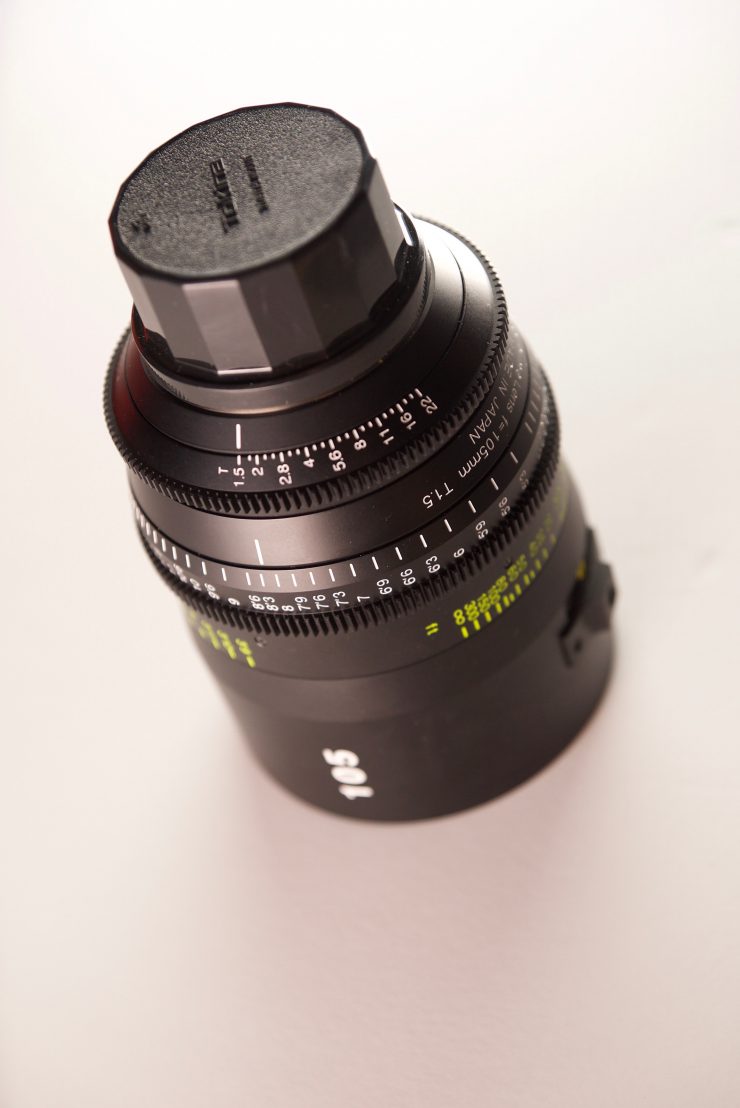
The Tokina Cinema Vista primes certainly lean more towards warm tones than say lenses from Zeiss. They have a nice amount of character and don’t appear too clinical and uninspiring. What look you actually prefer from a lens is entirely going to come down to personal choice. I really liked the warmer tones of the Tokina lenses as I found the color reproduction matched very well with my Angenieux Optimo Style zooms. This allows me to use a combination of zooms and primes while still maintaining a fairly consistent look.
The color tone of a lens is really something you should look at closely if you are going to be using both prime and zoom lenses from different manufacturers. Certain prime and zoom lenses work better together than others. What will work for you will also depend on what camera you are using.
Real World Thoughts
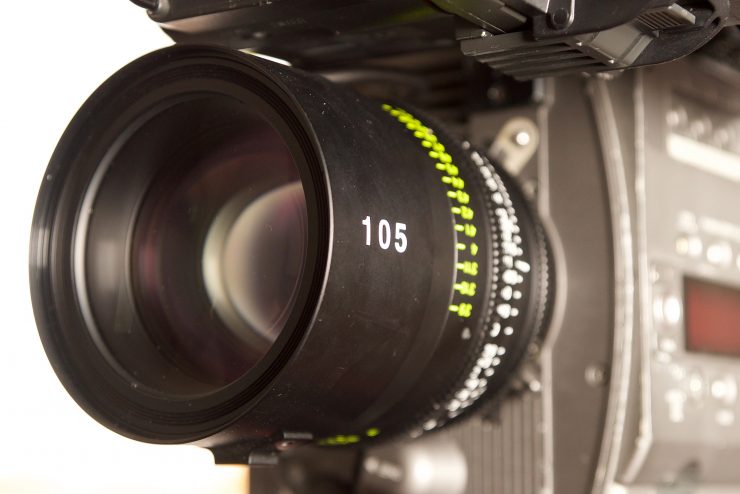
The 105mm T1.5, like the 18mm T1.5, is a bit of an enigma. It’s not the most common of focal lengths and depending on whether you use it on a Super 35 or full frame sensor camera really determines what you can use it for. On full frame or larger sensors, the 105mm provides you with a nice portrait or interview focal length. On a Super 35 sensor, it’s almost caught in no man’s land. While 105mm can work well as an interview lens, it’s stuck in between an 85mm and a 135mm. In saying this, I actually liked using the 105mm for interview shots and also for those situations where I needed a faster aperture and a longer focal length.
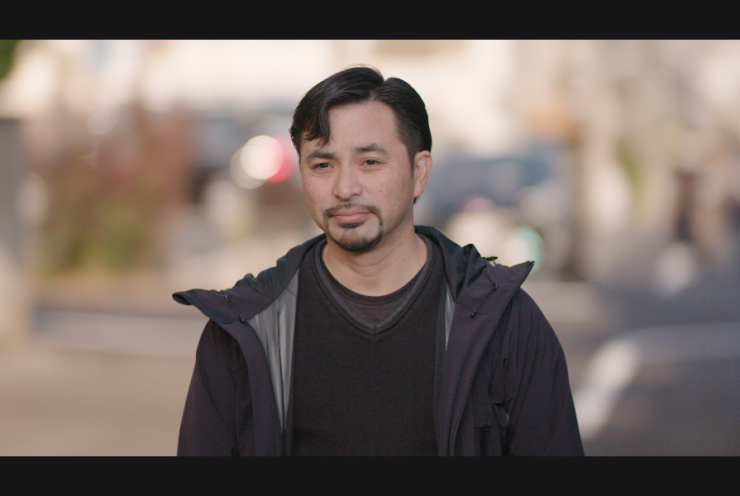
There is certainly no doubt about the optical performance of this lens. It is razor sharp, and produces beautiful bokeh.
The downside to having this fast aperture is you have to be willing to live with the size and weight of this lens. Using a prime lens that weighs in at 2.6kg is no easy task, especially if you are working by yourself. This weight constantly had me in a love-hate relationship with the 105mm T1.5. I loved the images I could get, but I hated lugging the lens around on shoots.
Price
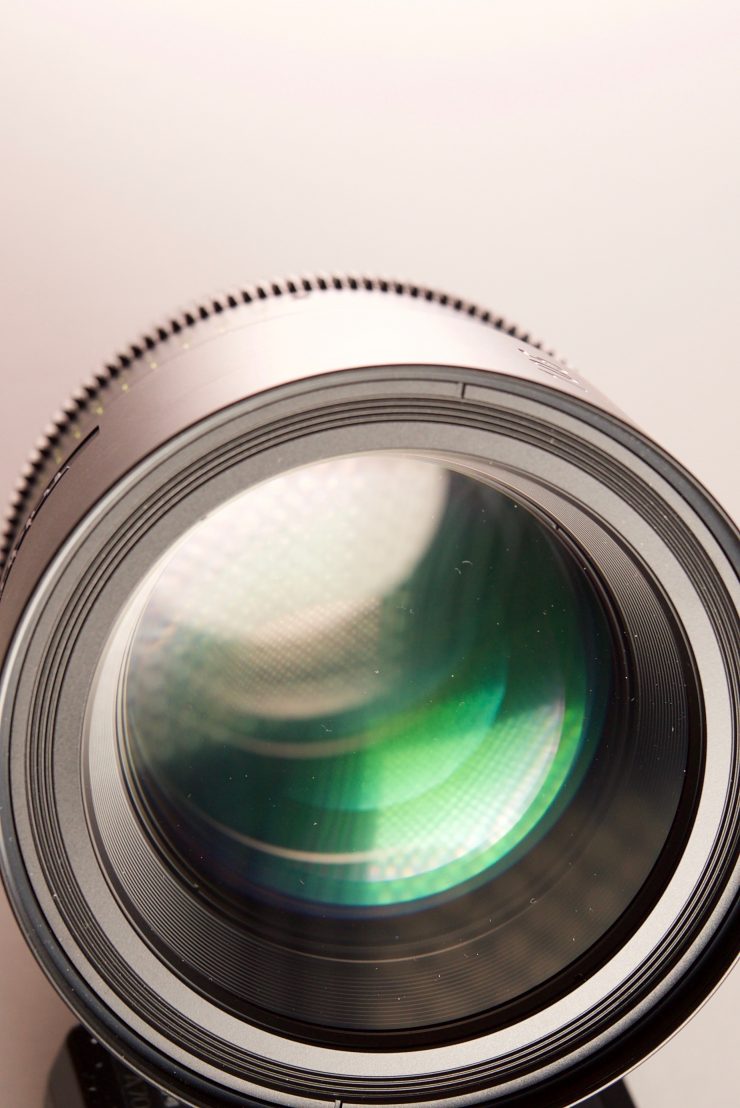
The Tokina 105mm T1.5 Cinema Vista retails for $7,499.00 USD. This is considerably more expensive than it’s
Competition
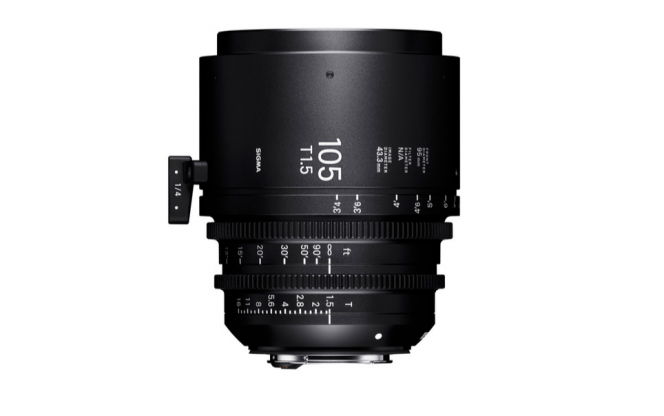
There is a lot of competition in the full frame cinema prime marketplace. Numerous established brands such as Zeiss, Canon, Sigma, Cooke, Leitz Cine, and ARRI all make full frame cinema prime lenses. The prices of all of these options vary dramatically from just a few thousand dollars all the way up to just below $30,000 USD.
As far as direct competition goes, there really is only one lens that is this fast in this focal length. That’s the Sigma 105mm T1.5 FF PL Mount High-Speed Prime Lens. The Sigma is cheaper ($4,999 USD), lighter (3.8 lb / 1.70kg), and shorter (126.2 mm). It does, however, only have a 180° focus rotation, and it covers a smaller image circle (43.3 mm). The Sigma is also a rehoused stills lens.
The advantages the Tokina has over the Sigma is that the Sigma has more contrast and less air gaps in the optical design making the transition from subject to foreground more flat. The Vista has higher resolution across the frame primarily because the image circle goes well beyond Vista Vision. It therefore is able to hold resolution farther out to the corners.
Other similar focal length options include the Zeiss 100mm and 135mm CP.3 prime lenses, but they are both
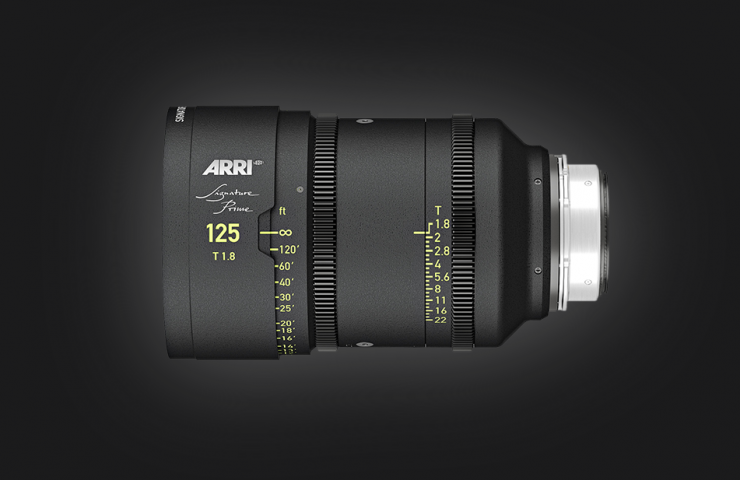
At the higher end, there is the ARRI 125mm Signature Prime LPL Mount is T1.8, but it also costs $28,400 USD. Leica also has the Thalia 100mm T2.2 Prime ($28,500 USD). Cooke makes the 100mm S7/i Full Frame Plus Prime T2.0 ($23,400 USD), as well as the 135mm S7/i Full Frame Plus Prime T2.0 ($26,500 USD).
Do you need a full frame cinema lens?
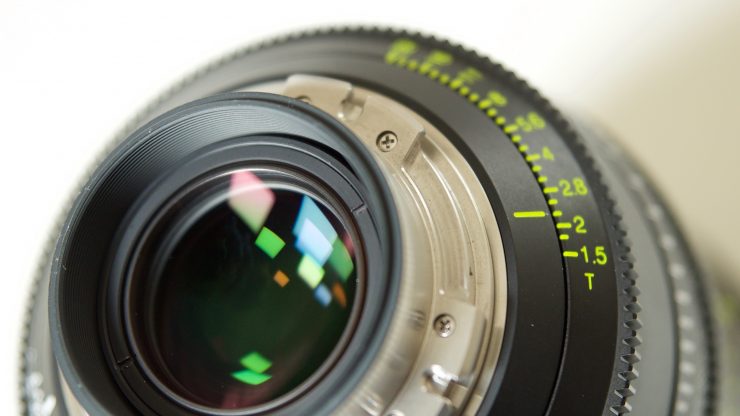
Let’s face it, a lot of us are not shooting on the RED DSMC2 Monstro 8K VV, or an ARRI ALEXA LF, so do we really need a full frame prime lens? I don’t shoot on a full frame digital cinema camera, but I have still chosen to invest in full frame prime lenses. I did this because the industry is moving quickly and I would prefer to spend my money on something that is going to be slightly more future proof than a lens that just covers an S35 sensor. If you do happen to own an S35 camera system that can utilize a speed booster then you would be able to take full advantage of the 105mm T1.5. Of course, you could use this on a full frame DSLR or mirrorless camera, but how many people are really going to use a lens that costs 3 to 4 times more than their camera.
Investing in a full frame lens is going to cost you a lot more money than buying one that just covers S35 sensors, and you need to factor that in ‘when considering what to buy.
Conclusion
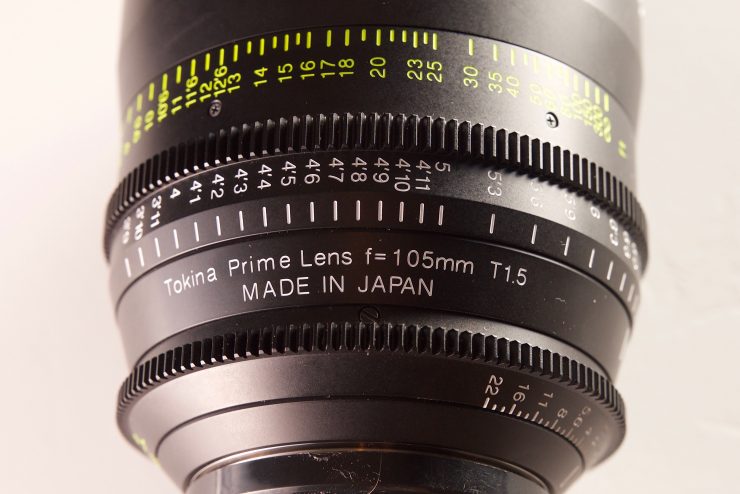
The Tokina 105mm T1.5 Cinema Vista is a beautiful lens. The caveat is that Tokina hasn’t compromised on performance, and to obtain that performance, the lens is large and heavy. You can’t take shortcuts with optical design and if Tokina had of attempted to make the lens lighter and smaller they would have had to sacrifice image performance. You can’t have your cake and eat it too.
The 105mm is tack sharp (even wide open), has no chromatic aberration, and produces beautiful bokeh.
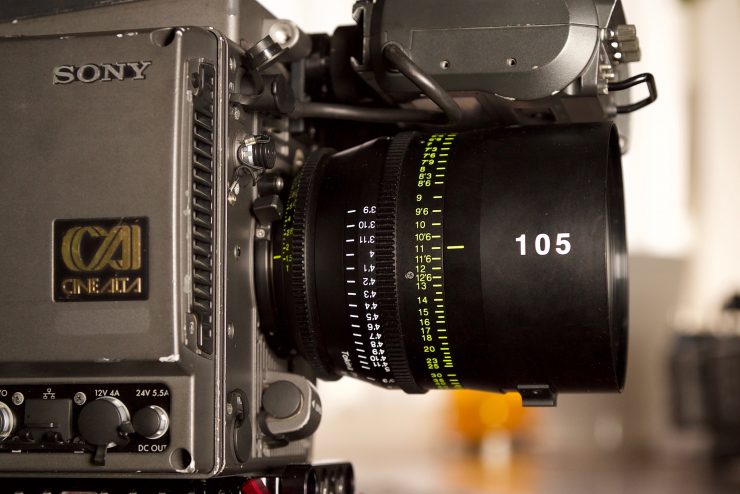
The lens is big and it’s heavy and you really do need to take those factors into account if you want to purchase one. Is it a lens for everyone? No, it’s not. Buying full frame glass is almost always going to set you back a lot more money, but that initial investment is probably going to be more of a benefit when looking towards the future. I don’t for one second think that Super 35mm glass is going to become obsolete, but





